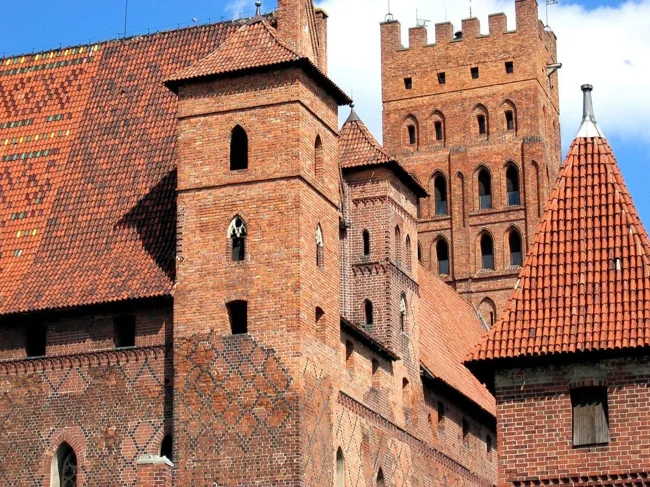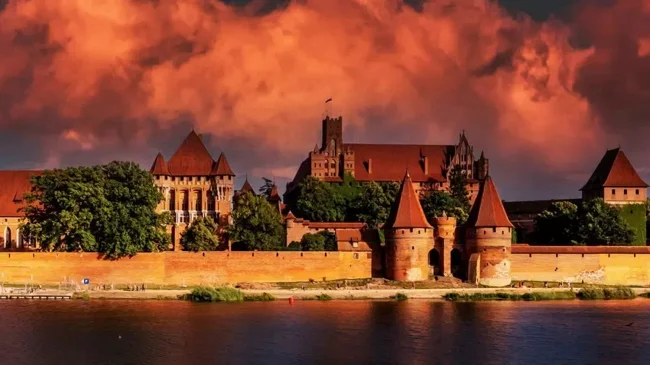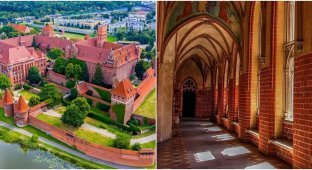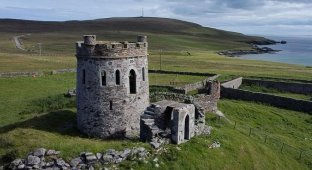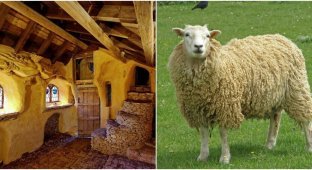Malbork – a miracle made of bricks (14 photos)
In the north of Poland stands a castle worthy of a crown. Malbork is not only the largest fortress in the world by area, but also the greatest brick structure of its kind. 
The castle was founded in the 13th century by the Teutonic Knights, the German crusaders who conquered Prussia. Construction continued for centuries: the fortress was expanded, decorated, and strengthened until it became a grandiose stronghold of power. 
Malbork (or Marienburg) stands on the banks of the Nogat River, 40 kilometers from the Baltic Sea. The water barrier and surrounding swamps made it almost invulnerable: it could only be attacked from the south, where powerful walls and towers rose.
The entire complex was divided into three lines of defense: the outer (workshops, warehouses, and servants' quarters), the middle (the administrative center with guest quarters), and the upper (the heart of the fortress, where the church, refectory, dormitory, and chapter house were located).
Brick Power 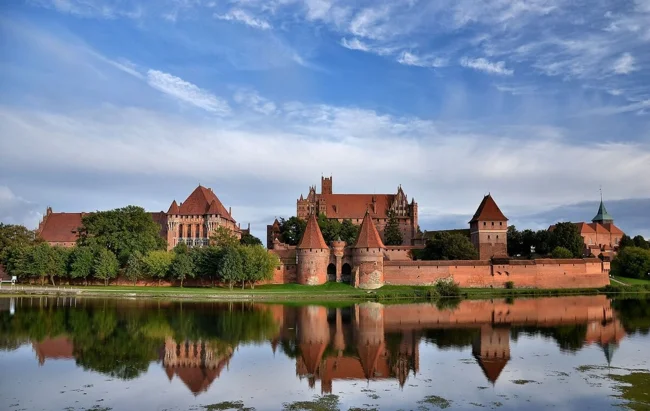
There was a shortage of stone in the region, so the castle was built of brick (about 30 million pieces were used to create it). The foundation was reinforced with river boulders, and the bricks were molded on site from river silt. Stone was used only for decorative elements, for example, in the church portals.
Thanks to its strategic location, the Teutonic Order controlled trade on the river, collecting duties from ships. However, in 1457, during the Thirteen Years' War, the fortress was captured by the Poles, and for the next 300 years it served as a royal residence - twice as long as the Order's headquarters.
Oblivion and Revival 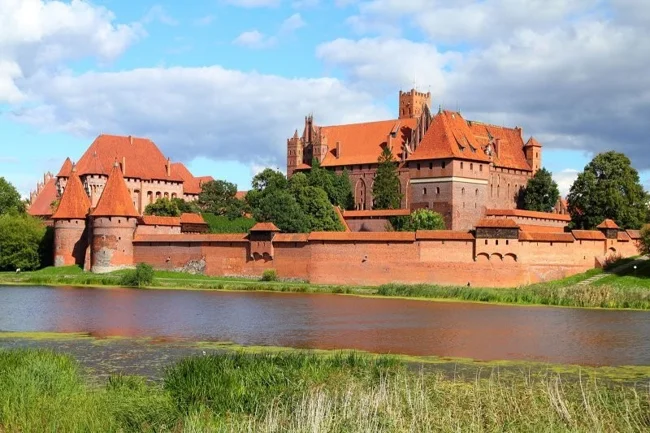
By the 18th century, the castle had fallen into disrepair: it was used as barracks and as an almshouse. In 1794, the question of demolition was even considered, but the architect David Gilly sketched its ruins, and these sketches aroused interest in the history of the Teutonic Order.
In the 19th century, restoration began, which lasted for a hundred years.
Under Hitler, Malbork became a place of pilgrimage: the Nazis saw the Teutonic Order as a prototype of their conquests. Himmler dreamed of making the SS a new version of the Order, and Malbork's architecture inspired several "Order castles" of the Third Reich.
Ironically, Hitler himself banned the Order, considering it a tool of the Vatican.
Rebirth 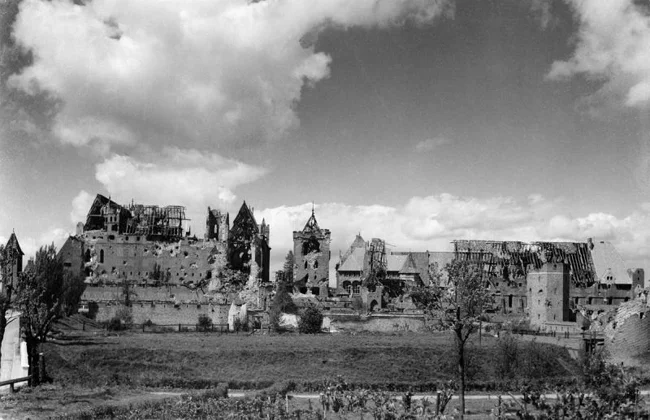
In 1945, the castle was badly damaged by shelling - half of the buildings lay in ruins. The restoration was completed only in 2016, returning Malbork to its former glory.
Today it is a pearl of Gothic architecture, reminiscent of the times when brick and will created impregnable fortresses. 
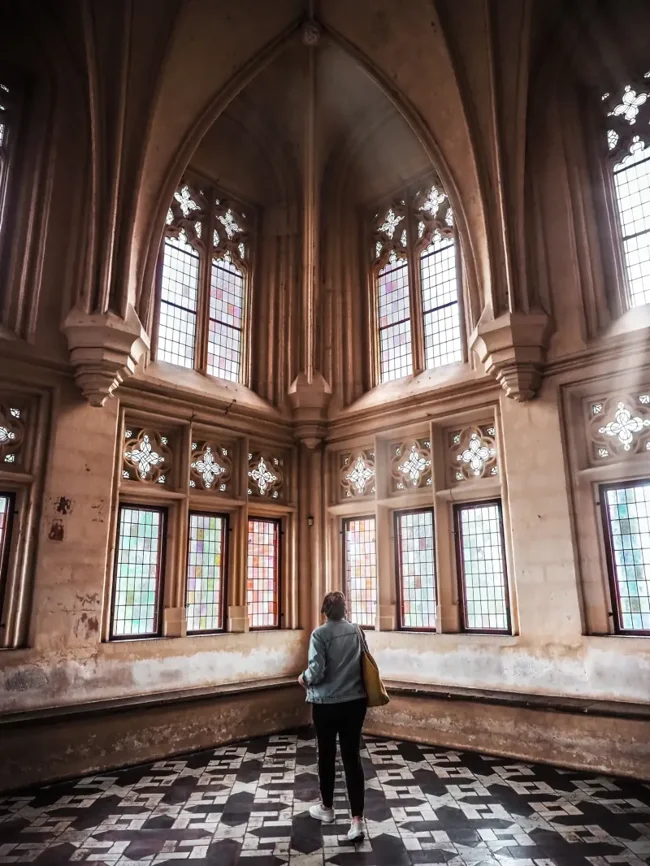
[thumb]https://cn22.nevsedoma.com.ua/p/29/2900/1 11_files/8014e4dfbc0ec340dac2785c86c1632b.webp[/thumb] 
[thumb]https://cn22.nevsedoma.com.ua/p/29/2900/111_files/e4cc87058 e7cd2473ce068c4d5d4f5b2.webp[/thumb] 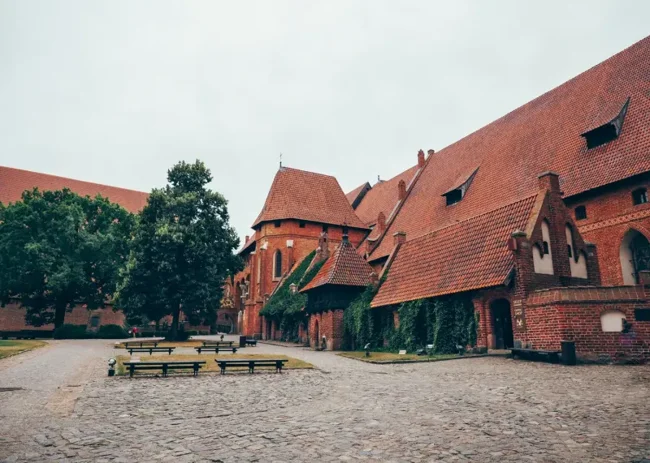
[thumb]https://cn22.nevsedoma.com.ua/p/29/2900/111_files/421bfc91191804ec20751a4fbca 64b5c.webp[/thumb] 